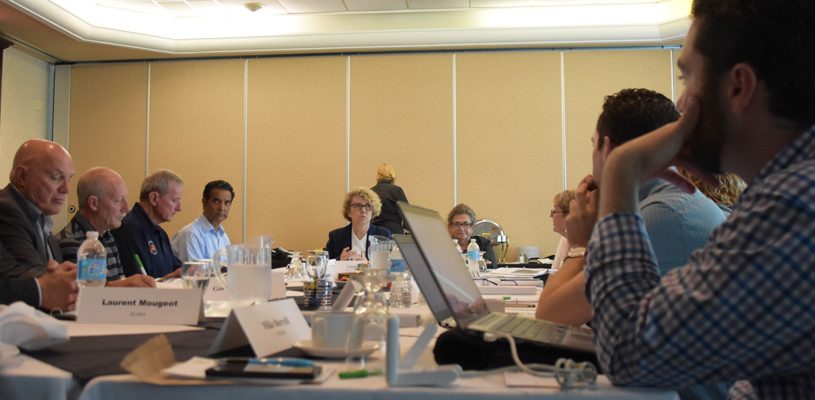Bringing sustainability into focus – and practice

When you think of the word sustainability, recycling, reducing carbon emissions, and reducing energy use may come to mind. But, they make up only one pillar of sustainability – environmental stewardship. There are two additional pillars that drive how sustainable organizations do business: social responsibility; and business efficiency and ethics.
While each pillar stands on its own, together they create a complete definition of sustainability. Sustainability means operating in a way that satisfies an organization’s current needs without sacrificing its ability to meet the needs of future generations.1 However, if one pillar crumbles, others topple with it, which can damage an organization’s ability to succeed.
Environmental Stewardship
Have you ever thought about how much electricity is used in your organization’s day-to-day operations? Rock Hill School District, in South Carolina, wanted to upgrade its surveillance systems – but in a way that saved energy.2 Because research indicated that additional lighting doesn’t necessarily deter crime, the district determined that shutting off all lights at night and upgrading its network video cameras was the best way to improve safety while also reducing energy costs.
The district chose to install a security video solution that produces high-resolution colour images in low-light scenarios. Such technology not only improves safety, but also saves thousands of dollars that can be reallocated to other programs.
Social Responsibility
Socially responsible organizations strive to improve the wellbeing of employees and people around the world. This might be achieved by: offering internships; creating safe work environments; partnering with charitable organizations; and providing employees with social responsibility hours.
Such organizations can also participate in initiatives that affect their environmental footprint. For example, organizations can offset thousands of tons of CO2 equivalents from business trips by planting trees. It’s a way of doing something concrete – beyond simply paying lip service.
Business Efficiency and Ethics
The business efficiency and ethics pillar is less about how organizations profit, and more about how and why they protect assets, processes, and people. Here are two ways this pillar could impact your organization:
1. Efficiency and customer satisfaction – From a business standpoint, operating ethically can help improve workplace efficiency. Non-ethical practices tend to distract employees, decrease happiness, and create friction and dissonance within offices.
2. Supply chain compliance – Sustainable organizations operate under a company code of conduct, as well as a code dedicated solely to suppliers.
An increasing number of organizations are adopting sustainable practices with the understanding that they can make powerful, positive changes inside and outside of their four walls. However, for an organization to be truly sustainable, it must ensure all three pillars of its sustainability model are aligned. After all, as previously mentioned, if one pillar falls, others tumble with it.
Sustainable organizations understand that how they develop and use solutions is just as important as what they create. At Axis Communications, for example, the focus is on providing security solutions that help sustain businesses and safeguard people while also ensuring the use of eco-friendly materials. It reflects a commitment to uphold the three pillars to help create a sustainable future.
While sustainability is still coming into its own in the business world, one thing is clear: the integration of sustainability will be defined by how well organizations adopt these three pillars.
1 http://www.thwink.org/sustain/glossary/Sustainability.htm.
2 https://www.axis.com/files/success_stories/ss_edu_rock_hill_schools_71621_en_1802_lo.pdf.
Paul Laughton, Architect and Engineering Manager at Axis Communications, supports both internal employees and external customers in designing smarter sustainable solutions.
as published in Municipal World, November 2018



